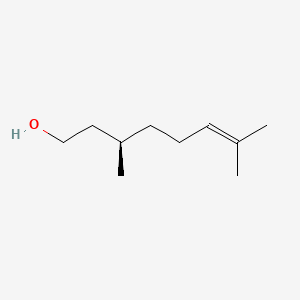| Authors | Title | Published | Journal | PubMed Link |
|---|---|---|---|---|
| Song AA et al. | Functional expression of an orchid fragrance gene in Lactococcus lactis. | 2012 | Int J Mol Sci | pmid:22408409 |
| SestraÅŸ RE et al. | Poisson parameters of antimicrobial activity: a quantitative structure-activity approach. | 2012 | Int J Mol Sci | pmid:22606039 |
| Kim E and Park IK | Fumigant antifungal activity of Myrtaceae essential oils and constituents from Leptospermum petersonii against three Aspergillus species. | 2012 | Molecules | pmid:22945026 |
| Ben Hsouna A and Hamdi N | Phytochemical composition and antimicrobial activities of the essential oils and organic extracts from Pelargonium graveolens growing in Tunisia. | 2012 | Lipids Health Dis | pmid:23216669 |
| Steyer D et al. | QTL mapping of the production of wine aroma compounds by yeast. | 2012 | BMC Genomics | pmid:23110365 |
| Kulkarni SS et al. | A somaclonal variant of rose-scented geranium (Pelargonium spp.) with moderately high content of isomenthone in its essential oil. | 2012 | Nat Prod Commun | pmid:23074914 |
| Babu RO et al. | Virtual screening and in vitro assay of potential drug like inhibitors from spices against Glutathione-S-Transferase of Meloidogyne incognita. | 2012 | Bioinformation | pmid:22553389 |
| Campbell BC et al. | Chemosensitization as a means to augment commercial antifungal agents. | 2012 | Front Microbiol | pmid:22393330 |
| Sui HY et al. | Involvement of protein kinase A activation and phospholipase A(2) inhibition in the adenosine-activated basolateral 50 pS K(+) channels in the thick ascending limb of the rat kidney. | 2012 | Sheng Li Xue Bao | pmid:22907306 |
| Kong S et al. | Stimulation of Ca2+-sensing receptor inhibits the basolateral 50-pS K channels in the thick ascending limb of rat kidney. | 2012 | Biochim. Biophys. Acta | pmid:22050992 |
beta-Citronellol
Beta-citronellol is a lipid of Prenol Lipids (PR) class. The involved functions are known as Glycolysis.
Cross Reference
Introduction
To understand associated biological information of beta-Citronellol, we collected biological information of abnormalities, associated pathways, cellular/molecular locations, biological functions, related genes/proteins, lipids and common seen animal/experimental models with organized paragraphs from literatures.
What diseases are associated with beta-Citronellol?
There are no associated biomedical information in the current reference collection.
No disease MeSH terms mapped to the current reference collection.
PubChem Associated disorders and diseases
What pathways are associated with beta-Citronellol
There are no associated biomedical information in the current reference collection.
PubChem Biomolecular Interactions and Pathways
Link to PubChem Biomolecular Interactions and PathwaysWhat cellular locations are associated with beta-Citronellol?
There are no associated biomedical information in the current reference collection.
What functions are associated with beta-Citronellol?
Related references are published most in these journals:
| Function | Cross reference | Weighted score | Related literatures |
|---|
What lipids are associated with beta-Citronellol?
There are no associated biomedical information in the current reference collection.
What genes are associated with beta-Citronellol?
There are no associated biomedical information in the current reference collection.
What common seen animal models are associated with beta-Citronellol?
There are no associated biomedical information in the current reference collection.
